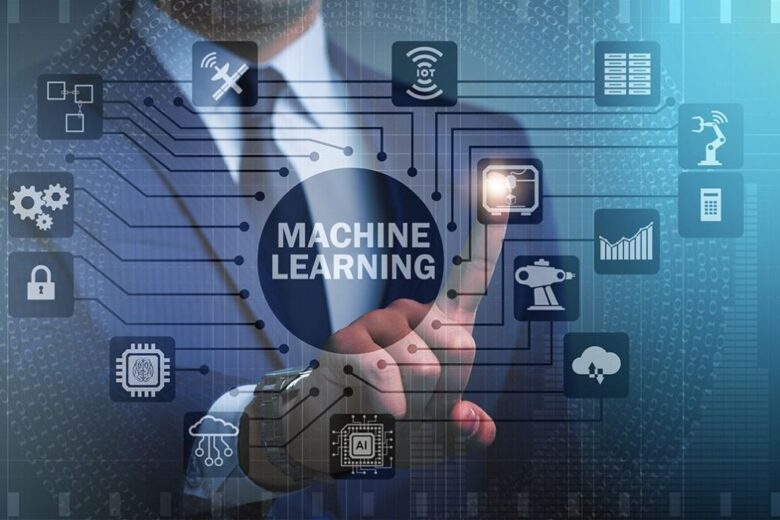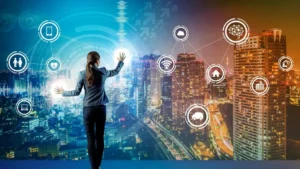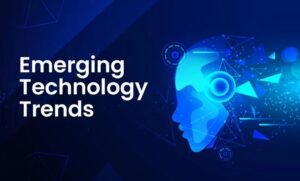Machine learning is revolutionizing business landscapes by increasing efficiency and offering competitive advantages. The technology’s predictive analytics help detect fraudsters in financial transactions while strengthening cybersecurity measures; furthermore, its medical image analysis capabilities assist doctors in diagnosing diseases more accurately while increasing patient outcomes. Neuronal networks offer tremendously efficient tools for creating trends and content more quickly.
1. All-purpose Models
Contrary to popular perception, machine learning does not replace human workers; rather, it evens out the playing field by equipping machines to do more of what people currently do. Recommender systems utilize browsing history and past purchases to provide suggestions that best match users’ tastes, while e-commerce platforms rely on these systems to optimize sales, and banks and investment firms utilize them to forecast stock trends and execute trades.
AutoML automates key processes related to data preparation, model selection, and hyperparameter tuning to make these tasks simpler for less technically inclined developers. AutoML shortens design time and reduces resources used in training neural networks while eliminating overfitting/underfitting risks that plague other models—thus enabling models to adapt seamlessly with new data without retraining required for each instance of adaptation.
2. Deep Learning
Deep learning is a subfield of machine learning that employs multi-layered artificial neural networks to analyze data with a logical structure. It offers more sophisticated results for tasks such as object detection, speech recognition, and language translation than its more simplistic predecessor, linear regression.
Deep learning technology has proven itself invaluable when applied to digital assistants like Siri, Cortana, and Alexa; these systems use natural language processing and deep learning technologies to save users both time and effort. Autonomous agents are another ML trend to watch. These programs are created to tackle specific tasks without direct human input and complete them as effectively as possible, creating tools to automate manual workflows and enhance customer service, resource management, and other business processes.
3. Autonomous Vehicles
Autonomous vehicles are an emerging industry trend with enormous potential to transform how people travel and reduce carbon emissions. To reach full autonomy, these cars must process sensor data in real time to make split-second decisions using machine learning algorithms to analyze roads, anticipate dangers, and execute precise actions.
These algorithms can be utilized in numerous applications, from sensor fusion and map generation to localization and prioritizing safety with fail-safe mechanisms and redundant information sourced from cameras, radars, and LiDAR. Furthermore, they use generative AI techniques to generate synthetic data, which exposes vehicles to various scenarios through simulations, ensuring their systems meet stringent safety standards before real-world deployment.
4. AI Assistants
AI assistants enable teams to streamline manual processes and focus on higher-value work by consolidating notifications and producing workflow status reports. AI assistants help teams save time and increase productivity by eliminating tedious, repetitive tasks like expense approvals, IT ticket resolutions, or email overload.
AI assistants rely on natural language processing (NLP) to interpret human input. NLP analyzes text or voice commands for grammar, intent, context, and nuances before turning them into actionable steps. For rapid responses, OpenAI Gemini or GPT-3 language models are used. AI literacy has become an in-demand skill. Implementing the appropriate solutions, however, can be daunting and requires rigorous testing, transparency, and risk management processes, as well as making sure decision logic can easily be explained to others.
5. Data-driven Marketing
Machine learning uses data to predict trends and develop targeted marketing strategies. For instance, algorithms utilizing machine learning analyze customer purchases and demographics to recommend new products or services; furthermore, they analyze electronic health records to improve treatment and optimize inventory management within retail.
Artificial intelligence is revolutionizing business processes like IT security by monitoring system usage patterns and anticipating cyber attacks before they take place. This prevents downtime and minimizes losses by taking preventative steps 24*7. AI helps reduce IT team workload by automating repetitive tasks, which enables organizations to focus on higher-value work while ensuring accuracy. It also saves costs by decreasing storage requirements and improving performance.
6. Artificial Intelligence in Healthcare
Artificial intelligence is revolutionizing healthcare by increasing diagnosis accuracy, streamlining clinical processes, and offering more individualized services. Furthermore, AI reduces drug development costs by screening potential compounds and targeting clinical trials more efficiently.
Machine learning (ML) algorithms enhance remote patient monitoring and telehealth by analyzing data from wearables, apps, and other devices to detect anomalies that need immediate medical attention and notify physicians in real time. They can also detect early symptoms of disease progression to enable proactive care that reduces hospital visits.
However, healthcare systems must overcome numerous obstacles before fully implementing machine learning. These include data privacy concerns, physician trust issues, compliance with regulatory standards, and making sure data used to train these algorithms is free from malicious attacks. Businesses must ensure that all the data used to train these algorithms remains safe from such malicious attacks.
7. Machine Learning in Transportation
Machine learning is revolutionizing transportation in numerous ways. For instance, it improves traffic flow and customer experience by automating tolls and parking systems, providing real-time road reports, and reducing congestion through crowd management strategies, as well as providing contactless payments and mobile ticketing capabilities.
Airline analytics help predict passenger demand to optimize logistics and warehousing operations, spot pipeline issues for safer maintenance, prevent out-of-stock situations in retail, identify fraudsters and criminals in banking/credit card systems, and create personalized experiences in travel/tourism. Furthermore, data analysis and hypothesis generation capabilities make scientific research much simpler.
Multimodal machine learning integrates images, text, audio, and more for accurate predictions, insightful responses, and nuanced responses that improve user experiences in multiple industries. Furthermore, sophisticated design concepts can now be generated seamlessly, allowing more sophisticated design solutions to be easily created to improve the user experience and efficiency.




